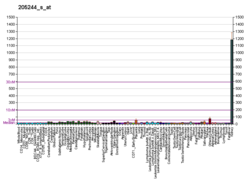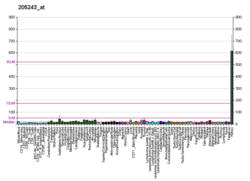| SLC13A3 | |||||||||||||||||||||||||||||||||||||||||||||||||||
|---|---|---|---|---|---|---|---|---|---|---|---|---|---|---|---|---|---|---|---|---|---|---|---|---|---|---|---|---|---|---|---|---|---|---|---|---|---|---|---|---|---|---|---|---|---|---|---|---|---|---|---|
| Identifiers | |||||||||||||||||||||||||||||||||||||||||||||||||||
| Aliases | SLC13A3 , NADC3, SDCT2, solute carrier family 13 member 3, ARLIAK | ||||||||||||||||||||||||||||||||||||||||||||||||||
| External IDs | OMIM: 606411; MGI: 2149635; HomoloGene: 11266; GeneCards: SLC13A3; OMA:SLC13A3 - orthologs | ||||||||||||||||||||||||||||||||||||||||||||||||||
| |||||||||||||||||||||||||||||||||||||||||||||||||||
| |||||||||||||||||||||||||||||||||||||||||||||||||||
| |||||||||||||||||||||||||||||||||||||||||||||||||||
| |||||||||||||||||||||||||||||||||||||||||||||||||||
| |||||||||||||||||||||||||||||||||||||||||||||||||||
| Wikidata | |||||||||||||||||||||||||||||||||||||||||||||||||||
| |||||||||||||||||||||||||||||||||||||||||||||||||||
Solute carrier family 13 member 3 also called sodium-dependent dicarboxylate transporter (NaDC3) is a protein that in humans is encoded by the SLC13A3 gene. [5] [6] [7]
Mammalian sodium-dicarboxylate cotransporters transport succinate and other Krebs cycle intermediates. They fall into 2 categories based on their substrate affinity: low affinity and high affinity. Both the low- and high-affinity transporters play an important role in the handling of citrate by the kidneys. The protein encoded by this gene represents the high-affinity form. Alternatively spliced transcript variants encoding different isoforms have been found for this gene, although the full-length nature of some of them have not been characterized yet. [7]





